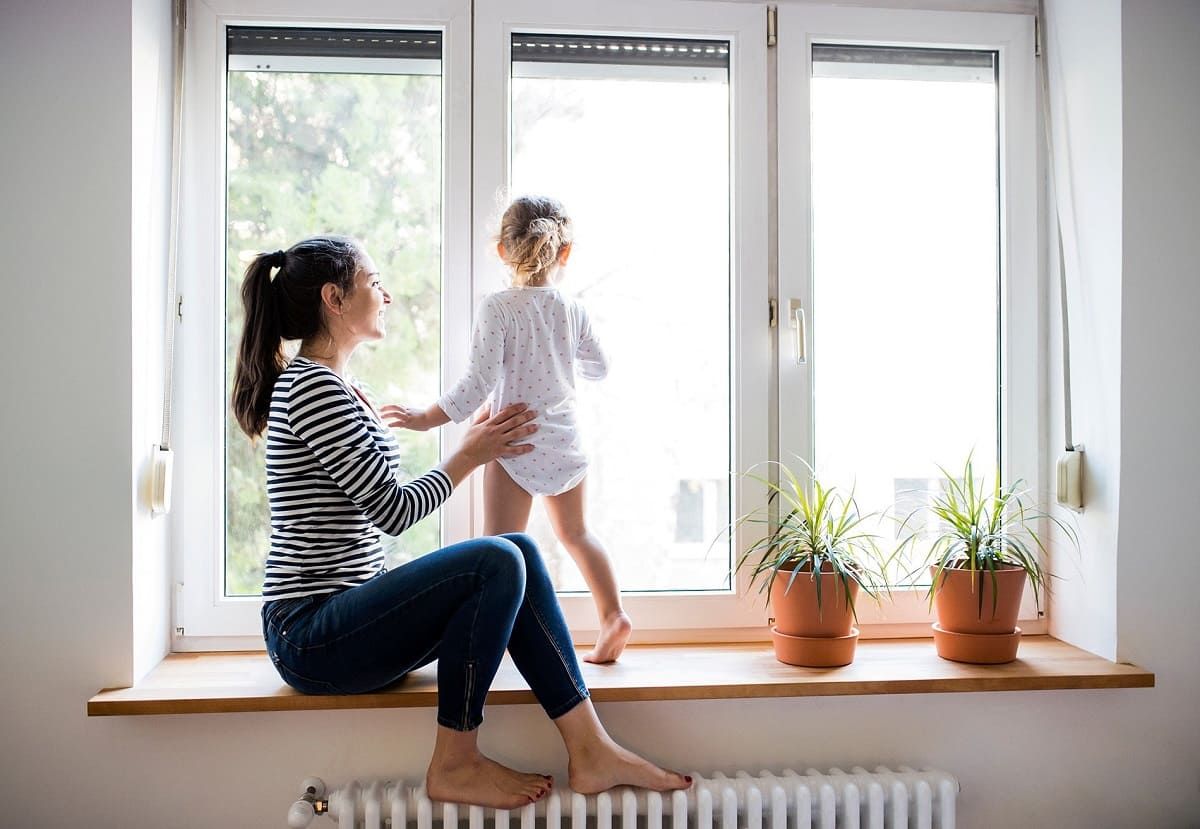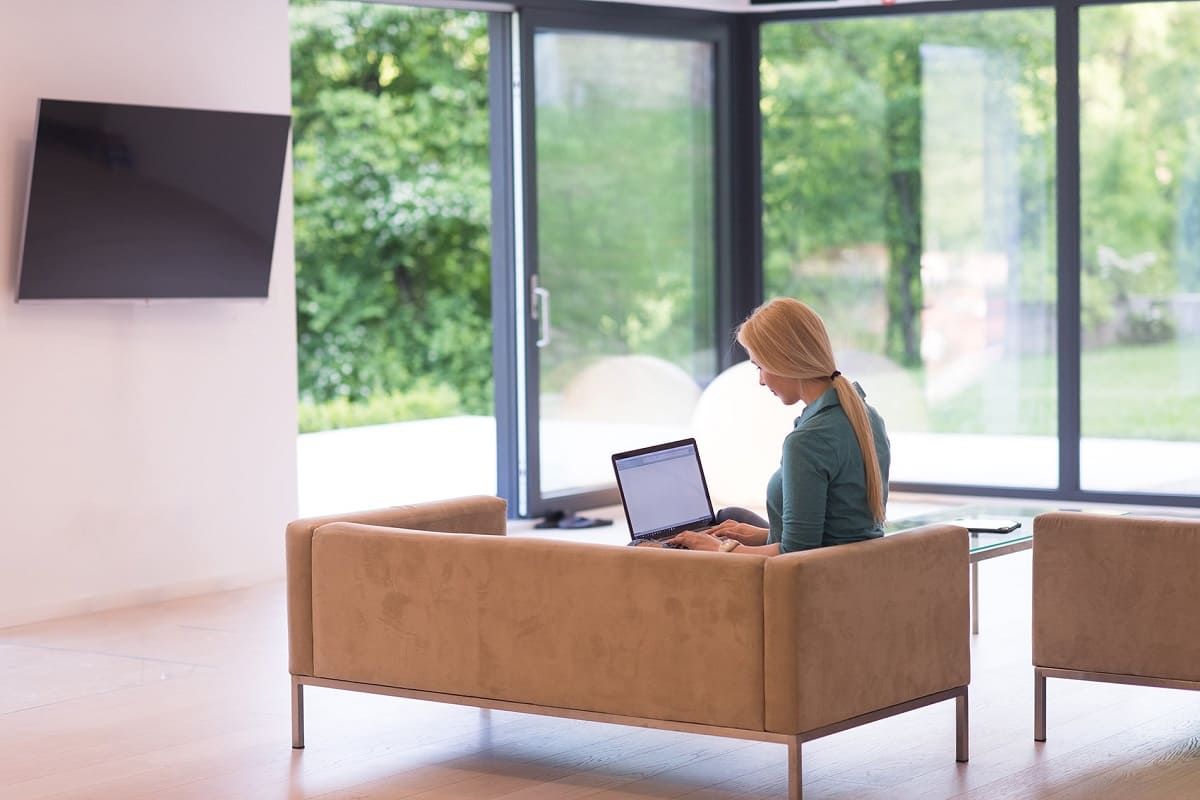Jacksonville & Lake City's Best Home Window Tinting Services
Home window tinting can turn your house into a safer, more comfortable place to live.
Home Window Tinting Benefits
1. Protection from dangerous ultraviolet rays.2. Reduce Heat to make your home comfortable for you and your family.3. Energy savings when the window films filter what is allowed in and out of your windows.4. Safety and security in knowing that our window films protect your family and home from dangerous blowing glass in a natural disaster.5. Reduced fading on your hardwood floors, upholstery, window treatments, and so much more.6. Eliminate the glare on your electronics and stop internal glare from blocking your view at night.7. Maintain the value of your home and get a tax credit with the The Energy Policy Act of 2005.
Ultraviolet (UV) protection for your home and family
UV window film helps prevent sun damage.
Block Harmful UV Rays
Home Window tinting helps preserve the color of fabrics, carpets and hardwood floors.
Most fabrics, furnishings and artwork can be damaged and fade when sunlight passes through untreated windows. By blocking more than 99% of all UV rays, UV window film offers protection for the things you love and have special meaning to you. It will help preserve the color of fabrics, carpets and hardwood floors and help protect fine antiques, woods and works of art from discoloration and fading.
UVA rays streaming through your home windows not only adversely affect your furnishings, but are damaging to your eyes and skin and may contribute to premature aging, and lead to skin cancer. With one out of five Americans developing skin cancer these days, why live with this risk? UV window film is designed to protect against harmful ultraviolet rays. It is a micro thin film that is transparent so you can enjoy the view without the UV.
UV window film has been recommended by dermatologists as another skin safe preventative measure for patients with solar sensitivity, skin related diseases and cancers of the skin. Our UV window films carries The Skin Cancer Seal of Recommendation. The seal is awarded to products that protect against skin cancer, like sunscreens. Help change the odds for your family. Make Residential UV window films part of your sun safety program. You can never be too safe.
Control Heat and Glare
Take control of the sun with residential window tinting. The only thing that will melt is your energy bill.
Our residential window films helps control heat build-up and keeps you comfortable.
Windows are an important part of any home, from the light they let in to views they reveal. However, they can also create a host of problems ranging from excessive glare, heat build-up and high energy costs as you’re forced to run the air conditioner more often to stay comfortable. Residential window tinting can help you control these problems while providing increased comfort and lower overall energy costs.
Windows play a significant role in regulating heat and energy in your home. According to the EPA Energy Star Buildings Manual in the United States, approximately one-third of an average home's utility bills are wasted by heat loss in winter and heat gain in summer through untreated windows.
Residential window tinting with window films can lower heating and cooling expenses by reducing solar heat from the outside, reducing hot and cold spots inside, and helping to prohibit heat from escaping.
Open your blinds, shades, or drapes and let the sunlight in! Our residential window films reduces glare by up to 87%, making it easier for you to watch television or work on a computer. And because residential window tinting is available in a variety of clear, light and subtle shades, you’ll be able to enjoy your view.
Protective Window Films for Your Family
An extra measure of protection for you and your family.
Protect yourself from broken glass with safety and security window films for your home.
Accidents and storms can shatter windows without warning, sending flying shards of glass everywhere. It can result in severe injuries to your family and significant damage to your home. This risk can be dramatically reduced with home safety and security window films.
Made with thick, heavy-duty polyester bonded by strong adhesives, these films provide a clear and invisible – yet powerful – barrier that helps hold glass in place in the event of an impact or earthquake. While this barrier helps protect you against the damaging effects of flying shattered glass, it also makes it much more difficult for an intruder to smash through your windows quickly.
Our residential safety and security window films meet the toughest industry standards in the United States, Europe and around the world, so you can trust that you’re using a product that works. And because it is optically clear, you won’t even know it's there – until something happens. Think of it as insurance!
Upgrade Your Windows Without Replacing Them
Energy-saving window film is an affordable alternative to replacing your windows.
Our residential energy-saving window film installation costs about one-fifth that of replacement windows.
Did you know that as much as one-third of a home’s heating and cooling costs can be lost through windows that are not energy efficient? With home fuel costs going through the roof, you may be considering the purchase of energy-efficient replacement windows. But before you spend thousands of dollars, consider all the savings you’ll enjoy with window films for your home.
Our energy-saving window film provides an affordable alternative to window replacement when your goal is to improve energy efficiency. Adding films to your home's windows can help your windows that are in good shape, but just not energy efficient. Damaged or deteriorating windows will need to be replaced. The fact is, the cost for quick, professional installation of energy saving window film is about one-fifth the cost of replacement windows! More importantly though:
- Energy-saving window films can also lower your home’s cooling costs.
- Energy-savings window films helps reduce your home's energy consumption, saves you money and also helps the environment.
So choose our line of LLumar or 3M residential film brands and upgrade your windows without replacing them and save all the way around.












